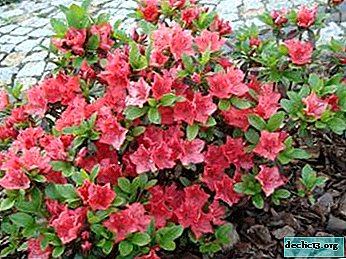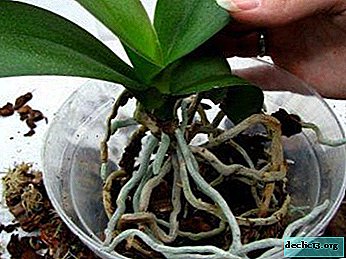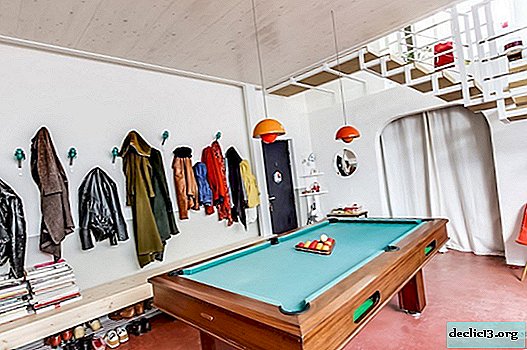Growing pomegranate at home. Are there any features of care and what to do if it does not take root?
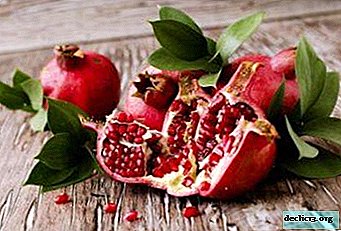
Pomegranate is a paradise (golden) apple, a fruit from the tree of knowledge. In Babylon, they were grown 5,000 years ago. You can admire the bright flowers, harvest a harvest of purple juicy fruits at the height of winter, when the garden is resting, gaining strength for the new season. Dwarf pomegranates delight from May to August flowering, from October to December - the fruits. Let's consider in the article whether it is possible to grow a pomegranate tree at home, when it needs to be planted, how to plant a stalk or root an air lay correctly, and also what to do if a plant does not take root.
What season is best for breeding?
Pomegranate is easy to propagate:
- by seeds;
- cuttings;
- vaccination;
- layering.
Varietal traits persist only during vegetative propagation. Optimum breeding period for rooting and planting:
- Cuttings in February - March or summer.
- Layers - in spring - in summer.
- Vaccination - in the fall.
Land selection and preparation
 For cultivation at home, they prepare or buy a loose moisture - breathable, neutral mixture (soil for begonias and roses).
For cultivation at home, they prepare or buy a loose moisture - breathable, neutral mixture (soil for begonias and roses).
Cuttings need a mixture: coarse calcined river sand and peat, 1: 1keep wet.
Root well in indoor greenhouses near radiators or with subsoil heating.
Saplings with roots (obtained from cuttings, layering, grafting), planted in a mixture of sod, humus, leafy soil and sand in a ratio of 1: 0.5: 1: 1. Necessarily at the bottom of the pot - drainage from expanded clay or large river pebbles.
Pot selection
Landing is made in five - seven - centimeter pots. The roots grow horizontally. Do not transplant for two to three years.Clay or ceramic pots are preferred., porosity allows excess moisture to evaporate, the roots are saturated with oxygen. The advantage of plastic ones is modern drainage systems, easy transshipment during transplantation (suction roots are damaged in ceramics).
A detailed description of the methods of growing pomegranate at home
We will analyze what methods of plant propagation exist at home.
Cuttings
- In summer or winter (survival is longer and more difficult), several semi-lignified shoots up to fifteen centimeters long (four to five buds) are treated with Kornevin.
- The lower kidneys are removed.
- Dip obliquely in a pot with a nutrient substrate of 3 cm.
- Cover with a jar.
- Air daily.
- Spray or water.
- After rooting (after two to three months), they are transplanted into pots separately.
Flowering is possible in a year, fruits in two years.
Layering
Air layers are not separated from the plant.
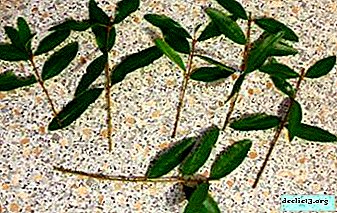 Two annular cuts (after 2 cm) are made not far from the lower leaves, and transverse between them.
Two annular cuts (after 2 cm) are made not far from the lower leaves, and transverse between them.- They remove the layer of bark, and roots form from the bare trunk.
- Take a dark plastic bag.
- Put on neatly below a bare place.
- Fill with moistened moss with the addition of Kornevin.
- Tightly wrap the bag on both sides.
- Periodically moisten moss.
Rooting in a few months. After layering, you need to cut and plant separately.
Vaccinated
On the stock of a pomegranate grown from seed, a stalk of fruit bearing is grafted.
In the cleavage
- Vaccination in the fissure is done in March-april.
- Make an incision.
- Insert the stalk into the incision.
- Bandaged.
Sleeping eye
- In August they are vaccinated with a “sleeping” eye.
- The side where the eye is inserted is turned north.
- Bandaged.
Photo
Further on the photo you can see a pomegranate tree.




How to care for the first time after planting?
In spring, young bushes accustom to the sunshine gradually, two to three hours a day, taking away from direct rays at partial shade. During the growing season, preferably warm + 25 degrees and above. In cloudy weather it is necessary to illuminate. Spray with cool water in hot weather. At low temperatures (+ 15 degrees in the summer), bring into the room. Arrange airing. The seedling is watered weekly.
From hypothermia and drying out, the topsoil is covered with wet sawdust (not necessary).
With a lack of light, the plant is stretched, the leaves are thinning, it is necessary to improve the illumination.Features of indoor plant care
In frequent top dressing does not need. From March to August every ten to fifteen days it is useful to feed:
- Mullein solution 1: 15;
- a solution of mineral fertilizers: 1 g of nitrogen, 1.2 g of superphosphate and 0.5 g of potash per 1 liter of water.
The plant is prepared for winter in September: feeding is stopped, watering is reduced. Watered with soft, settled water at room temperature after drying of the upper layer. At rest - once a month. Excessive or insufficient moisture provokes the discharge of flowers and leaves. In the heat, the leaves are wiped with wet wipes.
Pomegranate needs annual pruning and forming a crown in the form of a bush, cut weak shoots before the start of the growing season, during the summer remove root shoots, “fattening” shoots and branches directed inside the bush.
What to do if it does not take root?
- Create comfortable conditions: heat, lighting, moderate humidity.
- If the pomegranate drops the leaves, then you need to find a cool place to rest, set the backlight, wake up in spring.
- Check for pests. Take corrective action.
Overwintered plant with proper care in the spring will be restored.
The opportunity to grow a beautiful pomegranate tree at home will bring pleasure to the lover and delight loved ones with a small crop and its decorative effect. This is not only fun winter days. Fruits and juice have the properties of a diuretic, choleretic, analgesic, anti-inflammatory and vitamin action. The peel contains volatile, tannins and pectins.

 Two annular cuts (after 2 cm) are made not far from the lower leaves, and transverse between them.
Two annular cuts (after 2 cm) are made not far from the lower leaves, and transverse between them.




